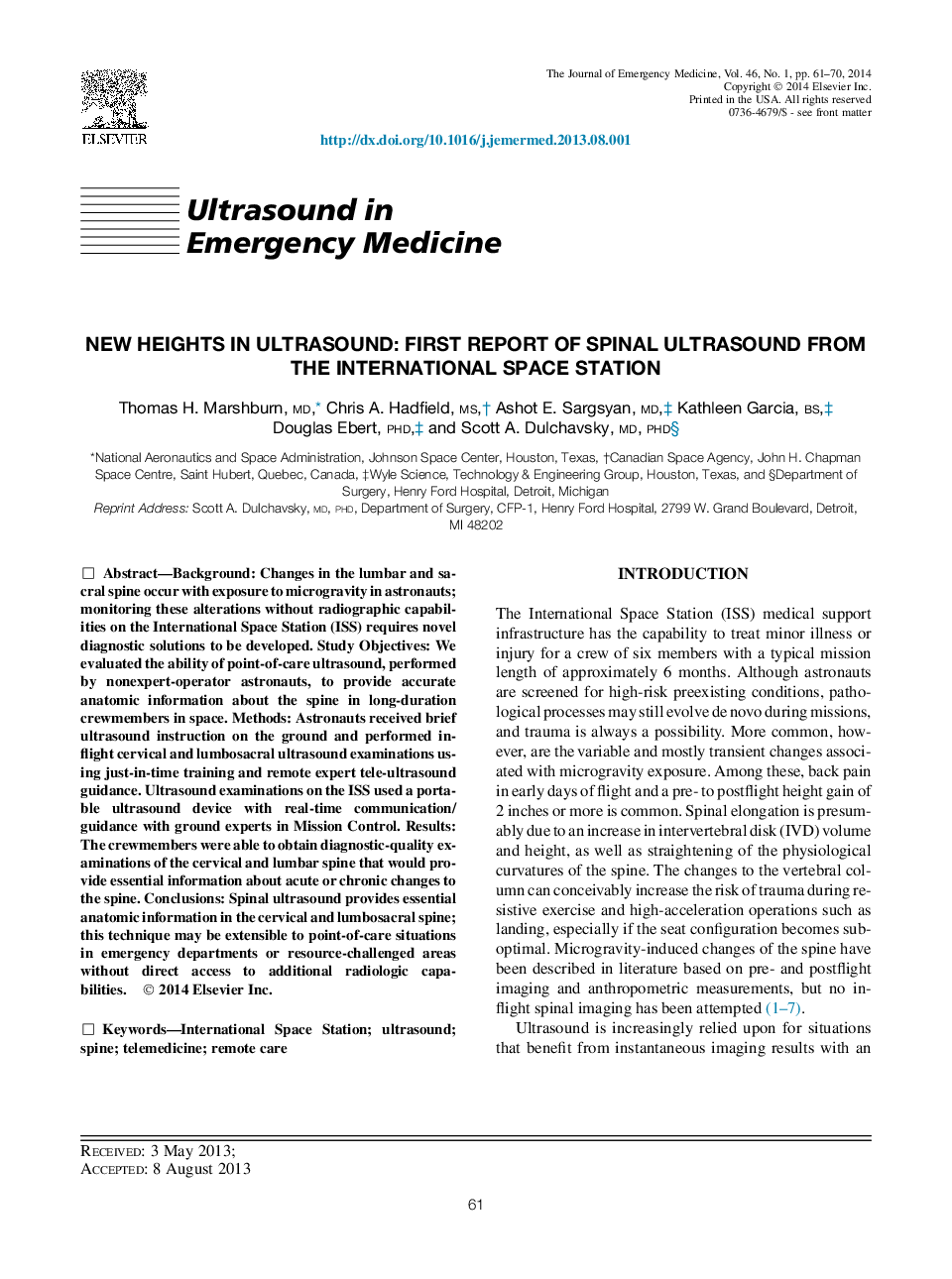| Article ID | Journal | Published Year | Pages | File Type |
|---|---|---|---|---|
| 3246621 | The Journal of Emergency Medicine | 2014 | 10 Pages |
BackgroundChanges in the lumbar and sacral spine occur with exposure to microgravity in astronauts; monitoring these alterations without radiographic capabilities on the International Space Station (ISS) requires novel diagnostic solutions to be developed.Study ObjectivesWe evaluated the ability of point-of-care ultrasound, performed by nonexpert-operator astronauts, to provide accurate anatomic information about the spine in long-duration crewmembers in space.MethodsAstronauts received brief ultrasound instruction on the ground and performed in-flight cervical and lumbosacral ultrasound examinations using just-in-time training and remote expert tele-ultrasound guidance. Ultrasound examinations on the ISS used a portable ultrasound device with real-time communication/guidance with ground experts in Mission Control.ResultsThe crewmembers were able to obtain diagnostic-quality examinations of the cervical and lumbar spine that would provide essential information about acute or chronic changes to the spine.ConclusionsSpinal ultrasound provides essential anatomic information in the cervical and lumbosacral spine; this technique may be extensible to point-of-care situations in emergency departments or resource-challenged areas without direct access to additional radiologic capabilities.
